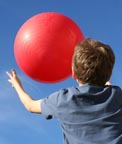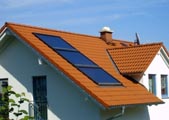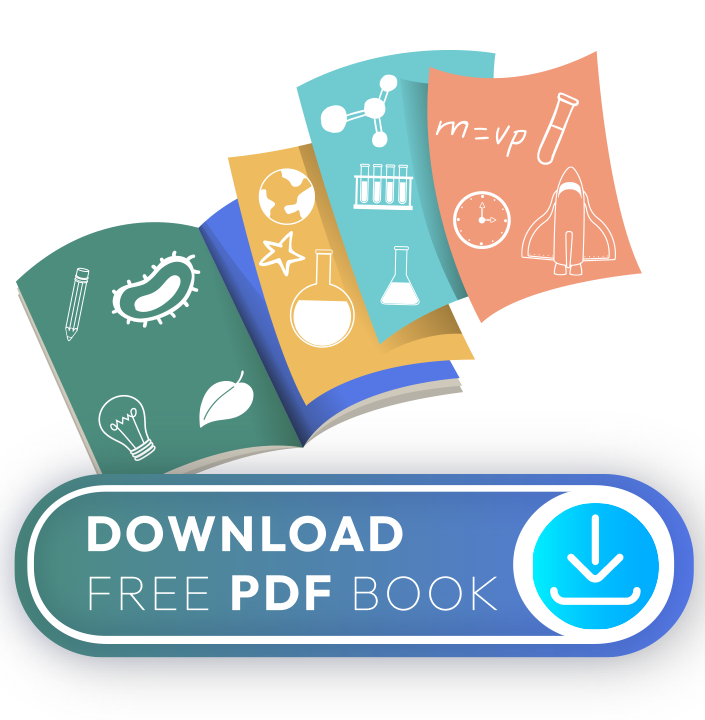You use energy every day. Do these fun experiments to learn about different kinds of energy and electricity that you have probably experienced before, but might not know much about.
Energy Science Projects

Super-charged Balloon
Make a balloon stick to the ceiling and make your hair stick up on its ends as you learn about electrical charges.
What You Need:
- Large balloon
- Wool scarf or sweater
What You Do:
1. Blow up the balloon and tie the end, so no air can escape. Rub the balloon several times with the wool.
2. Bring the balloon close to your bare arm to watch the small hairs stand on end. You can also bring the balloon close to a friend’s head and watch his or her hair stick out in all directions!
3. Bring the balloon towards your arm once more, this time letting it touch your skin. After it has touched your arm, will the balloon still raise your hair?
4. Rub the balloon with the wool again, then hold it next to a wall, moving it gently back and forth for a few seconds before letting go. With an adult’s help, you can also try sticking the balloon to the ceiling.
What Happened:
 Have you ever gone down a slide at the playground, and felt your hair sticking up? The slide and your hair rub against each other and create static electricity, which can stick to any surface, unlike other types of electricity that only flow through wires. When you rub the balloon and wool object together, it gives the balloon an electric charge, meaning it is full of static electricity. This charge makes the balloon move towards the wall and stick there even after you move your hand. It also pulls the hair on your arm towards the balloon, even though your arm is not touching it. When the balloon does touch your arm, it loses its electric charge. The static electricity is transferred to your arm and then to the floor, where it spreads out until it has disappeared. Now if you move the balloon up to your hair, it won’t stand up, since there is no longer any static electricity in the balloon. Rubbing the balloon again with the wool will create more static electricity and you can do it all over again.
Have you ever gone down a slide at the playground, and felt your hair sticking up? The slide and your hair rub against each other and create static electricity, which can stick to any surface, unlike other types of electricity that only flow through wires. When you rub the balloon and wool object together, it gives the balloon an electric charge, meaning it is full of static electricity. This charge makes the balloon move towards the wall and stick there even after you move your hand. It also pulls the hair on your arm towards the balloon, even though your arm is not touching it. When the balloon does touch your arm, it loses its electric charge. The static electricity is transferred to your arm and then to the floor, where it spreads out until it has disappeared. Now if you move the balloon up to your hair, it won’t stand up, since there is no longer any static electricity in the balloon. Rubbing the balloon again with the wool will create more static electricity and you can do it all over again.
Bend in the Stream
Bend a stream of water using a comb to see how static electricity can pull or push things!
What You Need:
- Kitchen or bathroom sink
- Hard rubber or plastic comb
- Wool scarf or sweater
What You Do:
1. Turn the faucet on so a small, steady stream is flowing. The stream should be no thicker than your pinky finger.
2. Rub the comb over the wool sweater or through clean, dry hair several times.
3. Hold the teeth of the comb close to the stream of water, but don’t put the comb into the water.
What Happened:
Did you see the stream of water bend towards the comb? The water was pulled towards the comb through static electricity. Rubbing the comb and sweater together created static electricity, which gave the comb an electrical charge. The electrical charge is what drew the water towards the comb. Water is neutral, meaning it cannot have an electrical charge, but it can be pushed away (repelled by) or pulled towards (attracted to) something with an electric force, like the comb that was full of static electricity.
Solar Hot Air Balloon
Use a trash bag to make a hot air balloon that gets its power from the sun! You will need to do this experiment on a warm, sunny day without wind.
What You Need:
- 1 black trash bag
- Twist tie
- String or yarn (about 8 feet long)
- Hairdryer (optional)
What You Do:
1. Take the twist tie, string, and trash bag outside to a cool, shady spot. Open up the trash bag and swing it around, filling it with cool air.
2. When the trash bag is full of air, close it up tightly using a twist tie.
3. Tie the piece of yarn or string around the bag near the twist tie, then take it out into the sun. Tie the other end of the string to a picnic table or chair in a sunny spot, away from trees. Watch to see if anything happens in the next few minutes. Come back later (it may take an hour or more) to see the results of your experiment. If you don’t have time to wait, use the hairdryer to warm the air inside the trash bag, then quickly bring it outside and hold onto the string. Watch what happens.
What Happened:
You should have eventually seen the trash bag slowly start to float up in the air. The sun not only gives light, it also gives heat. The color black absorbs a lot of heat, so the air inside of the black trash bag was warmer than the air outside it. As air heats up, it expands (spreads out), becoming lighter. Since warm air is lighter, it always rises above cool air. The black trash bag started to rise up as the air inside it got warmer. If you used a hairdryer to heat the air inside the bag, the same thing happened, you just used electrical power to heat the air instead of solar (sun) power! The fact that hot air rises is part of the reason why the lower level (or the basement) of a house feels cooler than the upstairs levels.
Energy Science Lesson
What Is Energy?
Energy is what we need in order to do things. It is the ability to do work. Everything we do, from jumping to drawing a picture, uses energy! Our bodies use energy that we get from the food we eat. Food contains energy, and when we eat it, our bodies convert the energy from the food into the energy that we need to do work or to play. Food is sort of like the fuel that we need to get things done, just like a car needs fuel to get from one place to another.
 Energy cannot be created or destroyed, but it can change from one form to another. This is tricky, because sometimes energy is being stored and you can’t tell it’s there. Stored energy is called potential energy. Fuel is a good example of stored or potential energy. It provides energy, but it can’t do any work on its own. When energy is being used, it is called moving energy or kinetic energy. When a car runs, it changes the stored energy in fuel into moving energy, which makes the car go! Here is a more simple example: If you hold a ball up in the air, it has potential energy. When you let go, it has kinetic energy as it falls to the ground. Can you think of other examples of potential and kinetic energy? There are lots of types of energy besides the kind that your body uses.
Energy cannot be created or destroyed, but it can change from one form to another. This is tricky, because sometimes energy is being stored and you can’t tell it’s there. Stored energy is called potential energy. Fuel is a good example of stored or potential energy. It provides energy, but it can’t do any work on its own. When energy is being used, it is called moving energy or kinetic energy. When a car runs, it changes the stored energy in fuel into moving energy, which makes the car go! Here is a more simple example: If you hold a ball up in the air, it has potential energy. When you let go, it has kinetic energy as it falls to the ground. Can you think of other examples of potential and kinetic energy? There are lots of types of energy besides the kind that your body uses.
Types of Energy
Electricity – One very important type of energy that we use every day is electricity. Electricity is what makes the lights in your house turn on and what keeps the refrigerator running. Electrical energy (the energy that comes from electricity) is used to do important jobs that help us cook dinner, wash clothes, or drive to the store. The car, TV, computer, air conditioner, and kitchen stove all use electricity. Can you think of more examples of electricity?
Static Electricity – When you run across carpet, then touch a doorknob, your hand might get a little shock. That was static electricity, which can also make your hair stand on end, or a balloon stick to the wall. To understand how this happens, you first need to know about matter, the stuff everything is made of. Tiny bits of matter, called atoms, that are too small for you to see, form together to make all that you see around you. Atoms are made out of even smaller pieces (or particles) called electrons and protons. These particles, even though they are so tiny, have a lot of force (they are really strong). This force is called an electrical charge.
When you rubbed the balloon with the wool in the first experiment, some of the electrons in the wool moved to the balloon, giving it a different electrical charge. This made the balloon stick to the wall. Static electricity happens only in dry weather. Water or moisture in the air makes it harder for the electrons and protons to move. In the summer, there is more moisture (or humidity) in the air, which is why you usually feel static electrical shocks in the winter, or on a dry day.
Lightning – Did you know lightning is a form of static electricity? That bright flash of light that you see during a storm, although it lasts less than a second, has a lot of electrical charge! Usually lightning appears when electricity moves from the dry air in the sky to the ground. Lightning makes a crooked path, moving away from things that block its way through the sky, like wind or rain.
 Solar Energy – Solar energy comes from the sun. The sun shines in the day, giving us light. It also makes the earth warmer, giving us heat. The sun has a lot of energy, which comes to the earth through light. Rays of light have energy. This energy can be changed into electricity with a solar cell. A solar cell collects sunlight, and then the sunlight breaks up into electrons and protons which flow through wire and bring electrical energy to a light bulb or other object that is connected to it. Solar energy can be used for a lot of things, such as powering vehicles, traffic lights, lights in a home or outdoors, heating water or pools, cooking food (learn how to Build a Solar Oven), and more.
Solar Energy – Solar energy comes from the sun. The sun shines in the day, giving us light. It also makes the earth warmer, giving us heat. The sun has a lot of energy, which comes to the earth through light. Rays of light have energy. This energy can be changed into electricity with a solar cell. A solar cell collects sunlight, and then the sunlight breaks up into electrons and protons which flow through wire and bring electrical energy to a light bulb or other object that is connected to it. Solar energy can be used for a lot of things, such as powering vehicles, traffic lights, lights in a home or outdoors, heating water or pools, cooking food (learn how to Build a Solar Oven), and more.
Batteries – A battery stores electrical energy. This means that a battery has a lot of potential energy, which turns into kinetic energy if you put the battery in a toy or flashlight. In a flashlight, wires connect the battery to a light bulb. The battery’s electrical energy flows inside the wires and is carried to the light bulb, changing the potential energy from the battery into the kinetic energy that makes the bulb light up.
Printable Worksheet
Use this connect-the-dots coloring worksheet to help kids review three different types of energy. After completing the worksheet, they can draw pictures of other sources of energy in the space provided.
Science Words
Energy– what we need in order to do all the things we do every day.
Potential Energy– stored energy that is not being used; when something is not moving.
Kinetic Energy– active energy that is being used; when something is moving.
Electricity– energy that is created by the pulling and pushing of electrons and protons.






